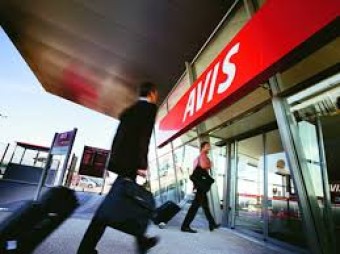Avis increases its ridesharing partnerships as pressure Increases on car rentals
For the Avis Budget Group, strong overseas returns aren’t offsetting weakness in the Americas, writes Andrew Sheivachman for specialist travel publication Skift. Through its partnerships with services like Uber and Didi, it’s looking for another way to make money with its fleet when rental demand flags. After a quarter of lukewarm results, Avis Budget Group is hopeful that continuing to diversify its offerings outside traditional car rentals will pay off in 2017.
Avis stock dropped more than 13 percent after announcing that its rental volume had dipped one percent in the Americas during the fourth quarter of 2016 and the company had missed its revenue forecast by about $80 million. It blamed weak demand around the holidays and following the U.S. election for most of its woes, since overseas demand and performance remained strong. The company is betting that its investment in a new mobile app and partnerships with ridesharing services around the world will help it find other routes to profitability as demand decreases for car rentals in many markets.
“We are developing our own mobility capabilities, including some technology that may be patentable, and leveraging the technology and capabilities of others,” said Avis Budget Group CEO Larry De Shon. “We’re also looking at carefully considered partnerships with other companies that occupy a unique and meaningful position in the evolving mobility landscape.
“For instance, in November we announced a global strategic partnership with Didi, China’s and the world’s largest mobile transportation platform, with over 300 million registered users. We see this as a significant opportunity to capitalize on substantial growth of outbound travel from China. As an example, within the first 10 days of launch, there were already over 200,000 views of our online interface with Didi.
Avis is testing its partnership with Uber in London, providing Uber drivers with Zipcar vehicles on an hourly basis. It’s a way for the company to earn more with their Zipcar fleet when traditional customers aren’t using them. De Shon said the company’s weak revenue was just a blip on the radar and he remains optimistic for 2017, despite headwinds faced by both Avis Budget Group and the car rental industry at large. He expects Avis Budget Group’s total revenue to increase by two or three percent this year.
“The pricing is still not there yet, but as demand improves and starts to soak up the fleet, hopefully that will present ourselves with some opportunities to start putting some yielding opportunities in place,” said De Shon. “Last year we were down five percent, and then we had a big change into the second quarter.
“And although we’ll be down in the first quarter this year, we’re hoping for another opportunity to have a change in our price per day as we turn into the second quarter as well. So, it really will depend on how well the fleets really kind of get back in line. Plus a later Easter this year will also help the second quarter a little bit.”
- Avis strengthens ties with Uber and Didi to offset losses in the Americas.









